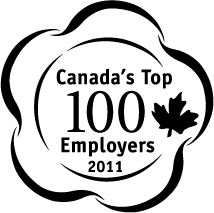 The Canada division of KPMG is using a job-simulation tool to assess managerial candidates in its tax, audit, and advisory practice areas, and will soon use it in campus recruiting. As much as it is about finding the best person, the company says it’s about branding and trying to engage passive candidates, not bore with them with a long test that leaves them scratching their heads, wondering if they’re giving the right answer to a question they don’t know why they’re being asked.
The Canada division of KPMG is using a job-simulation tool to assess managerial candidates in its tax, audit, and advisory practice areas, and will soon use it in campus recruiting. As much as it is about finding the best person, the company says it’s about branding and trying to engage passive candidates, not bore with them with a long test that leaves them scratching their heads, wondering if they’re giving the right answer to a question they don’t know why they’re being asked.
“The line is now blurring between assessment and branding,” says Moses Bar-Yoseph, the national director, talent attraction, for KPMG in Canada.
The Canada division has 5,400 employees, 32 offices, and about 46 people working on recruiting and employment branding. About three years ago, Bar-Yoseph and others started to look at where recruiting was going: more social media, more LinkedIn, more tools, and just generally, he says, “change on the horizon.” Bar-Yoseph felt that recruiting was going to change, away from simple job listings to pipelines and passives and all the things you’ve been reading about in recent years. KPMG wanted to be more proactive in attracting passive candidates.
Meanwhile, it came to believe that the basic psychometric tests that candidates have come to know and in some cases not love were not the way he wanted to go. Bar-Yoseph didn’t want people to answer a question and think, “I like the color blue so I don’t fit. That wasn’t what we were after. We were after something there was an actual exchange of information so the passive candidate would go through this and look more at what the job would look like. The job posting was not enough.”
It (with help from consultant Charles Handler) looked at vendors and settled in 2010 on Shaker Consulting Group, a company we once profiled in the Journal of Corporate Recruiting Leadership (ask me, at todd@ere.net, if you want me to send you that issue). KPMG and Shaker spent about a year building a simulation, including extensive work by Shaker in reviewing KPMG’s HR materials, shadowing employees, analyzing KPMG jobs, and more.
Bar-Yoseph said the assessment’s goal was to “approximate what it would look like” to work at the company, and to tell employees “what they need to know about us to make an informed decision … here’s what we value. Implicit in that was, do you value that to?”
 The simulation went live in August 2011. It sets up real-life scenarios for candidates, and asks candidates how they’d handle the situations. The assessment asks questions such as whether they, the job candidate, would be more likely to delegate a task or do it themselves — a task such as dealing with an under-performing employee. Or, in other parts of the assessment, candidates are given 2 1/2 minutes to type in a response — not choose from a drop-down menu — to a question such as, “how would you improve morale on your team?”
The simulation went live in August 2011. It sets up real-life scenarios for candidates, and asks candidates how they’d handle the situations. The assessment asks questions such as whether they, the job candidate, would be more likely to delegate a task or do it themselves — a task such as dealing with an under-performing employee. Or, in other parts of the assessment, candidates are given 2 1/2 minutes to type in a response — not choose from a drop-down menu — to a question such as, “how would you improve morale on your team?”
The simulation, about an hour long, isn’t given to everyone. KPMG is having only those who make it through the initial screen take it — people who’ve been selected for a face-to-face interview. Hiring managers use it to know what areas to probe during the interview, what questions to ask candidates. Perhaps something like this: “you indicated in the assessment that you’d delegate x types of duties … can you tell me about an experience doing that, how you made it successful?”
There are also questions that are more bio-data-like, such as what publications people read. And, questions about what’s important to people, such as whether it’s more important for them to be an industry guru, or to train and mentor others.
A cross-section of current KPMG employees in Canada also took the simulation/assessment, so that candidates’ scores can be compared to top performers. It’s integrated into the Kenexa system that KPMG uses to manage the resumes that come in.
Bar-Yoseph said a few dozen candidates have taken it so far. Feedback from them is limited as of now, but, he says, feedback from current managers and employees is “glowing.” In the next couple of months, KPMG will roll out the test to campus hires, which, he says, will be an “exponentially larger” group of test-takers. I should watch my tongue: Bar-Yoseph emphasizes that in building this tool, “the last thing we wanted was for people to feel like this was a test.”